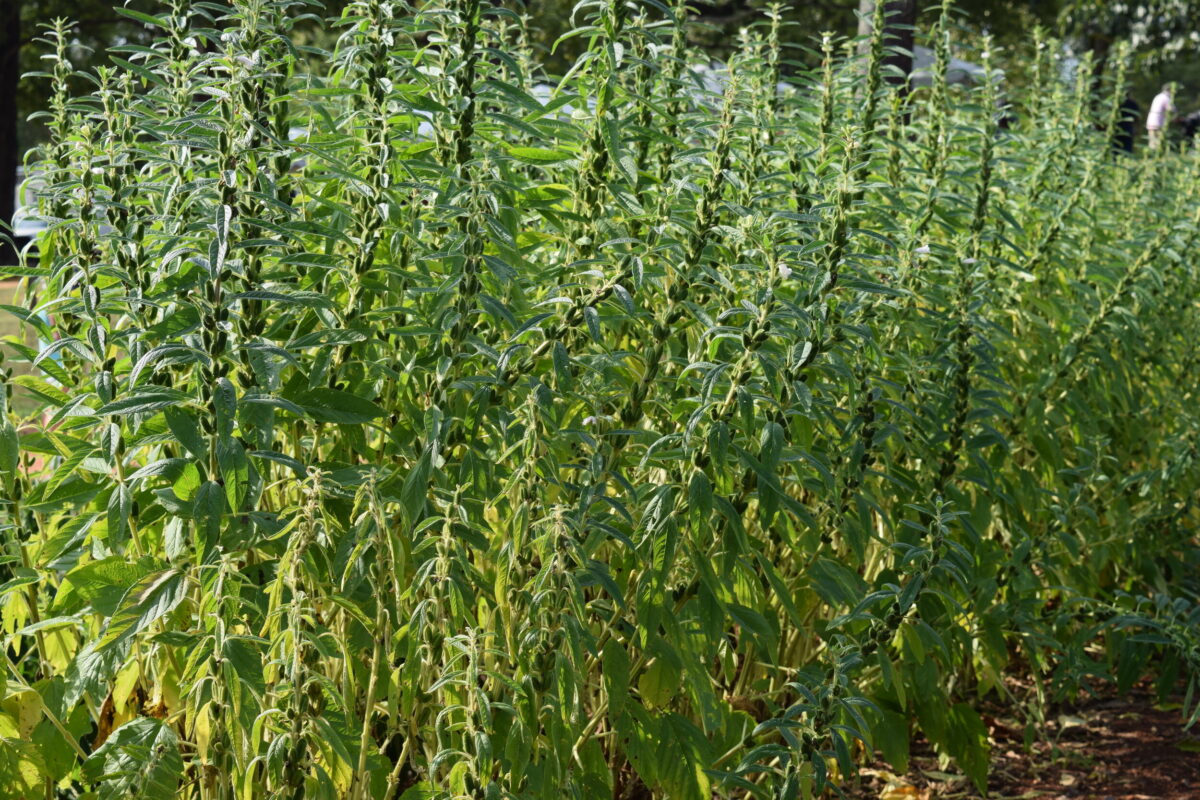Growing sesame seeds can be a rewarding and profitable endeavor. This step-by-step guide will provide you with all the necessary information to successfully grow sesame seeds, from preparing your soil to harvesting your crops. By following these steps, you can ensure a healthy and productive sesame seed harvest.
Preparation
Choosing the Right Location
- Sunlight: Sesame plants thrive in full sun, needing at least 6-8 hours of direct sunlight daily. Ensure your planting area gets ample sunlight throughout the day.
- Soil: They prefer well-drained, fertile soil with a pH between 5.5 and 8.0. Conduct a soil test to determine the pH and amend the soil if necessary.
Climate Requirements
- Temperature: Sesame plants grow best in warm climates with temperatures ranging between 77°F (25°C) and 95°F (35°C). Ensure you plant your seeds after the last frost when the soil has warmed up.
Preparing the Soil
- Tilling: Loosen the soil to a depth of at least 12 inches (30 cm) to improve drainage and root penetration.
- Adding Organic Matter: Incorporate compost or well-rotted manure into the soil to enhance fertility and organic content.
Planting Sesame Seeds
When to Plant
- Timing: Plant sesame seeds in late spring to early summer when the soil temperature is consistently above 70°F (21°C).
Seed Selection and Treatment
- Quality Seeds: Purchase high-quality, disease-free seeds from a reputable supplier.
- Pre-soaking: Soak the seeds in water for 6-8 hours before planting to improve germination rates.
Planting Techniques
- Spacing: Sow the seeds 1/2 inch (1.25 cm) deep, spacing them 6-8 inches (15-20 cm) apart in rows that are 2-3 feet (60-90 cm) apart.
- Thinning: Thin the seedlings to about 12 inches (30 cm) apart once they reach 2-3 inches (5-7.5 cm) in height to ensure proper air circulation and reduce competition.
Caring for Sesame Plants
Watering and Irrigation
- Consistent Moisture: Keep the soil consistently moist but not waterlogged. Sesame plants are drought-tolerant but benefit from regular watering, especially during dry spells.
- Drip Irrigation: Use drip irrigation to provide consistent moisture and reduce the risk of fungal diseases.
Fertilization and Soil Management
- Balanced Fertilizer: Apply a balanced fertilizer (N-P-K: 10-10-10) before planting and side-dress with nitrogen fertilizer during the growing season.
- Soil Testing: Conduct regular soil tests to monitor nutrient levels and adjust fertilization accordingly.
Weed Control
- Mulching: Apply a layer of organic mulch around the plants to suppress weeds and retain soil moisture.
- Manual Weeding: Regularly weed the planting area to prevent competition for nutrients and water.
Pest and Disease Management
- Common Pests: Watch out for aphids, whiteflies, and sesame leaf rollers. Use insecticidal soap or neem oil to control infestations.
- Disease Prevention: Ensure good air circulation, avoid overhead watering, and rotate crops to prevent fungal diseases like leaf spot and root rot.
Harvesting Sesame Seeds
Determining the Right Time to Harvest
- Maturity: Harvest sesame seeds when the seed pods turn brown and start to split open. This usually occurs 90-150 days after planting, depending on the variety.
Harvesting Methods
- Manual Harvesting: Cut the plants at the base and hang them upside down in a well-ventilated area to dry.
- Threshing: Once the pods are fully dry, gently shake or beat the plants to release the seeds.
Post-Harvest Processing and Storage
- Cleaning: Remove any debris and impurities from the seeds by winnowing or using a sieve.
- Storage: Store the cleaned seeds in airtight containers in a cool, dry place to maintain freshness and prevent spoilage.
Conclusion
By following these steps, you can successfully grow and harvest sesame seeds. With proper care and attention, you’ll enjoy a bountiful harvest of this versatile and nutritious crop. Happy gardening!

